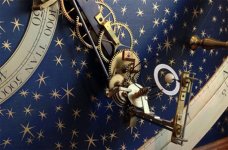MrStretch
Hot Rolled
- Joined
- Mar 20, 2017
Really just want to toot my horn, but my proposal to restore and document the Drexel Rittenhouse orrey clock was approved today. The "most important clock in America" will finally be restored and properly documented. The guy who wrote the monograph with the above quoted title is a retired engineer who based the entire work on photos of clock and complete ignorance of traditional clockmaking. If you want to see real bodgery in action, there is video on line of him and a similarly sausage fingered friend adding a modern coil spring to the movement behind the dial. Can't wait to remove it and really fix the problem.






